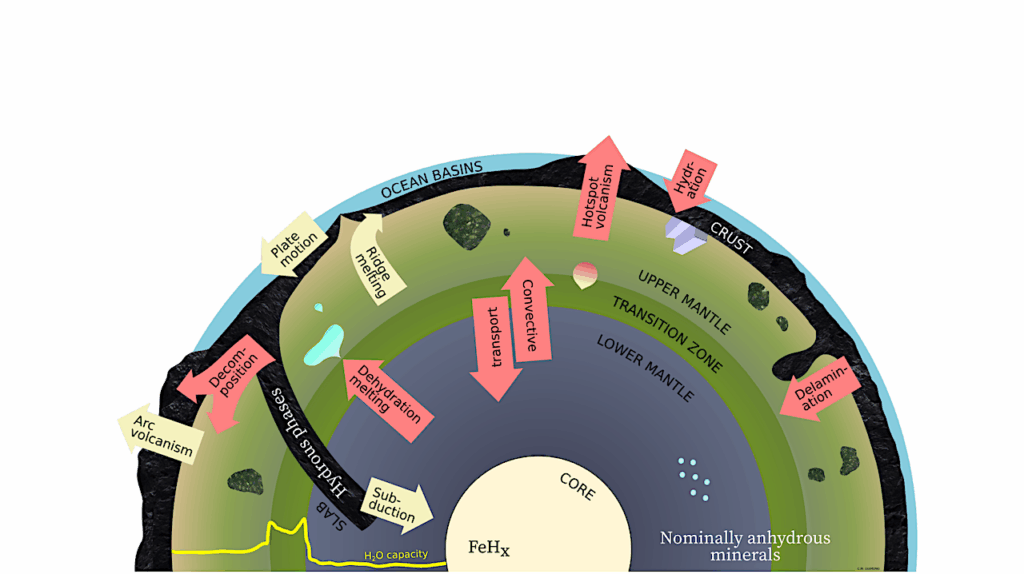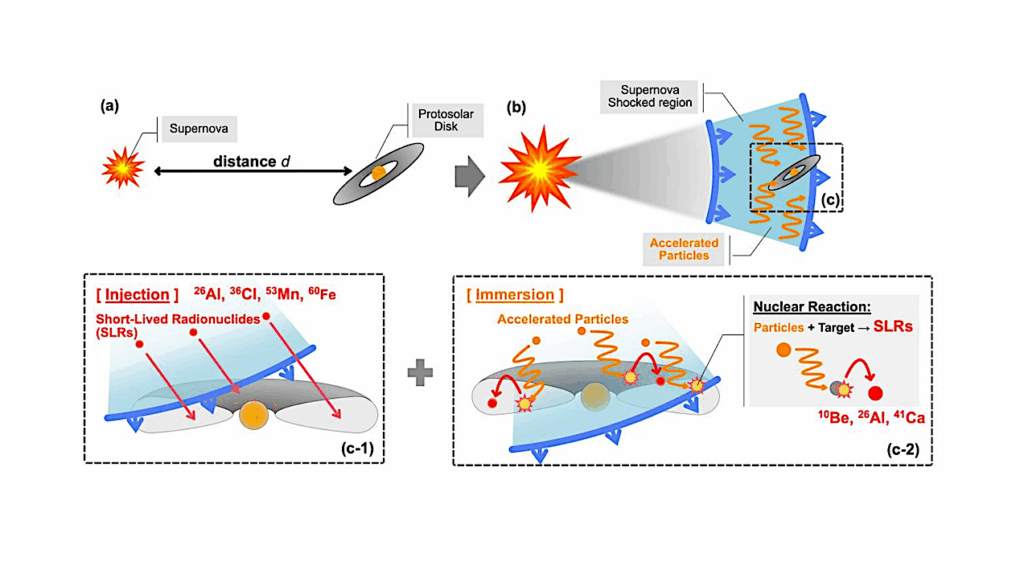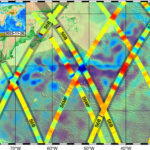Now Reading: Evaporitic Preservation of Modern Carotenoid Biomarkers and Halophilic Microorganisms in Mars Analog Hypersaline Environments
-
01
Evaporitic Preservation of Modern Carotenoid Biomarkers and Halophilic Microorganisms in Mars Analog Hypersaline Environments
Evaporitic Preservation of Modern Carotenoid Biomarkers and Halophilic Microorganisms in Mars Analog Hypersaline Environments
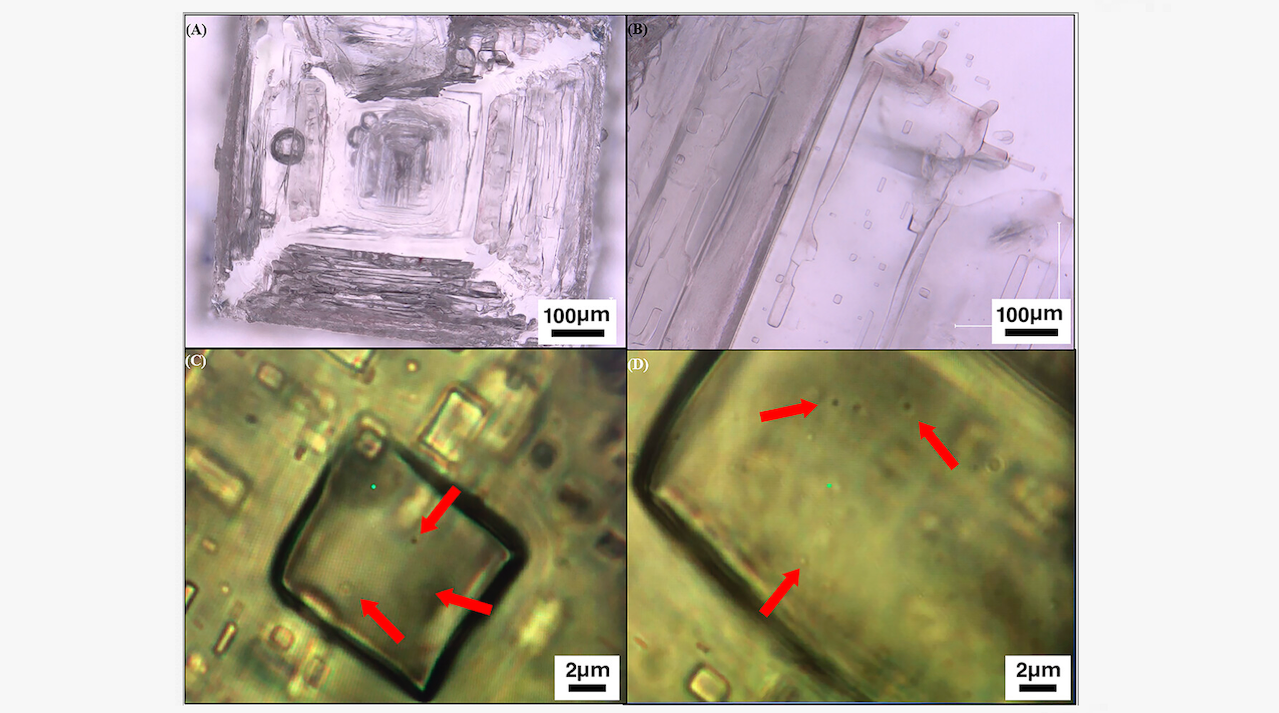
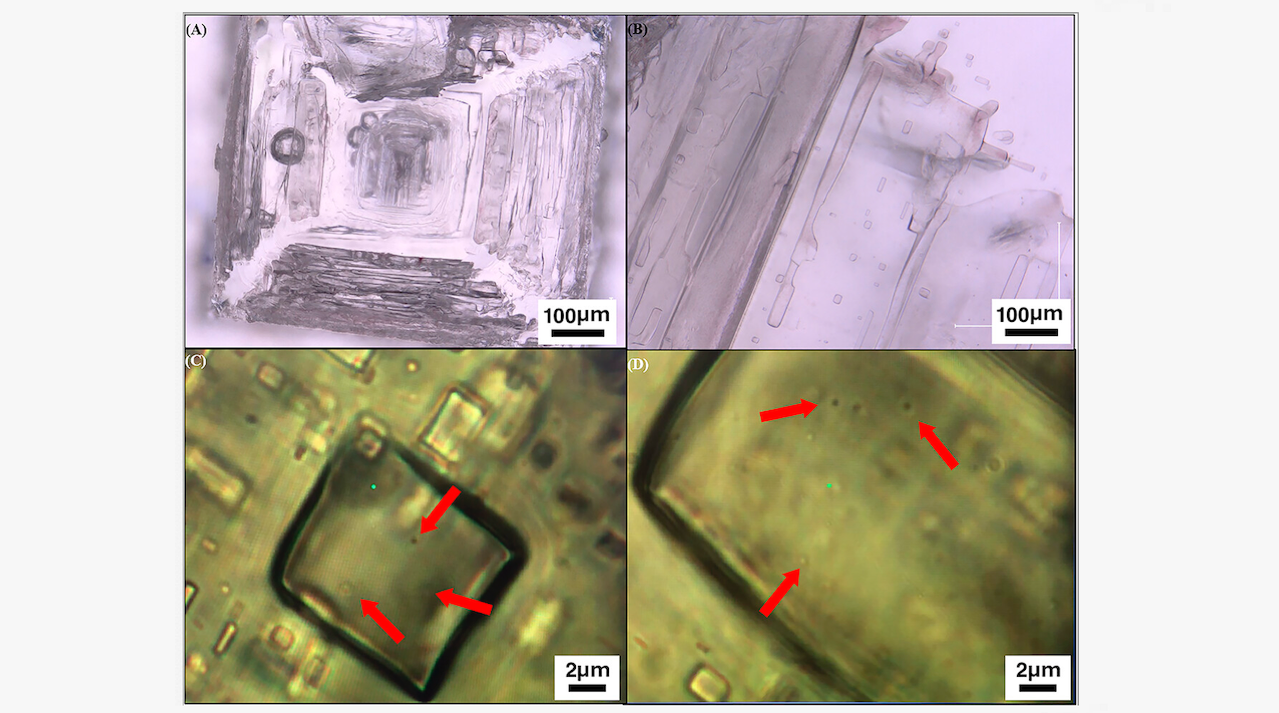
Raman optical observations at 10× and 100× showing original halite hopper crystal and microbial movement within fluid inclusions entombed within the crystal structure. (A) Entire halite cubic crystal showing rectangular fluid inclusions on all four faces with an air bubble on the left face. Scale bar is at 100 μm. (B) Enhanced image of (A) showing fluid inclusion patterns within cubic halite habits. Scale bar is at 100 μm. (C) 100× image highlighting a fluid inclusion within a single crystal. Red arrows show microbial movement. Green targeting dot highlights an entombed biomass. Scale bar is 2 μm. (D) Another 100× image showing a larger fluid inclusion [when compared with (C)] with increased microbial movement within the fluid inclusion. Scale bar is 2 μm for 2C,D. — Astrobiology via Sage Journals
Our investigation in Mars-relevant terrestrial environments where biological material is entombed within rapidly precipitated evaporite crystals has given us the ability to evaluate the preservation potential of a hypersaline brine system in advance of interrogating similar environments on Mars.
These evaporite minerals, halite (NaCl) and gypsum (CaSO4), have been found to host authigenic fluid inclusions over geologic time, with cellular life and carotenoid pigments that are understudied in the planetary context.
Great Salt Lake provides an excellent site to test the ability to detect organic matter in Mars-relevant evaporite crystals. DNA was extracted to determine which microbial clades were present and assess the attenuation of DNA preservation from the host fluid of the lake to the mineral.
Raman spectroscopy was used to investigate the presence of pigments that have longer preservation potential than DNA. Compared with the water column, evaporite minerals preserve higher volumes of DNA and associated biochemistry, whereas entombed fluid inclusions preserve even higher magnitudes of both biomarkers.
This indicates organic addition and continued preservation as the crystals precipitate from the fluid, which was later confirmed as micrometer-scale environments continued to maintain the ecology within closed-system fluid inclusions. Raman analyses of halite revealed the presence of β-carotene and bacterioruberin, consistent with the presence of carotenoid-generating bacteria and archaea in this hypersaline environment, which are characterized by pink coloration.
The continued preservation of these chemical biomarkers over time has led to the formation of physical biosignatures within the evaporite record. Given that these same minerals are present in ancient fluvial sites across Mars, halite and gypsum are ideal candidates for future in situ observation and should be considered high priority for sample return missions.
IMAGE
In situ evaporite minerals from the Great Salt Lake. (A) Halite terrace roughly 75 m near the shoreline of the north arm of Great Salt Lake at Rozel Bay. Excavated sections of the terrace revealed pink coloration due to carotenoid pigments, either entombed or associated with halophilic microorganisms. Height of terrace is ∼0.3 m. (B) Ripple-fanlike megastructure approximately 600 m from the start of the halite terrace formation containing vertically precipitated gypsum evaporite crystals. These crystals contain entombed intercrystalline clays making up <3–10% of the mineral matrix and intracrystalline insoluble sediment in smaller abundances. The tops of the protruding CaSO4 crystals are ∼70–180 mm in height (C, D). Modern subsurface sections of Searles Lake that contain hypersaline brine pools in close proximity to precipitating evaporite mineral assemblages containing hanksite [Na22K(SO4)9(CO3)2Cl], halite (NaCl), gypsum [CaSO4, and can be precipitated as selenite (CaSO4·2H2O) alongside gypsum], mirabilite (Na22SO4·10H2O), and major features of measured trona (Na2CO3·NaHCO3·2H2O). Astrobiology via Sage Journals
Astrobiology
Stay Informed With the Latest & Most Important News
Previous Post
Next Post
-
 012024 in Review: Highlights from NASA in Silicon Valley
012024 in Review: Highlights from NASA in Silicon Valley -
 02Panasonic Leica Summilux DG 15mm f/1.7 ASPH review
02Panasonic Leica Summilux DG 15mm f/1.7 ASPH review -
 03From Polymerization-Enabled Folding and Assembly to Chemical Evolution: Key Processes for Emergence of Functional Polymers in the Origin of Life
03From Polymerization-Enabled Folding and Assembly to Chemical Evolution: Key Processes for Emergence of Functional Polymers in the Origin of Life -
 04How New NASA, India Earth Satellite NISAR Will See Earth
04How New NASA, India Earth Satellite NISAR Will See Earth -
 05And Thus Begins A New Year For Life On Earth
05And Thus Begins A New Year For Life On Earth -
 06Astronomy Activation Ambassadors: A New Era
06Astronomy Activation Ambassadors: A New Era -
07SpaceX launch surge helps set new global launch record in 2024













